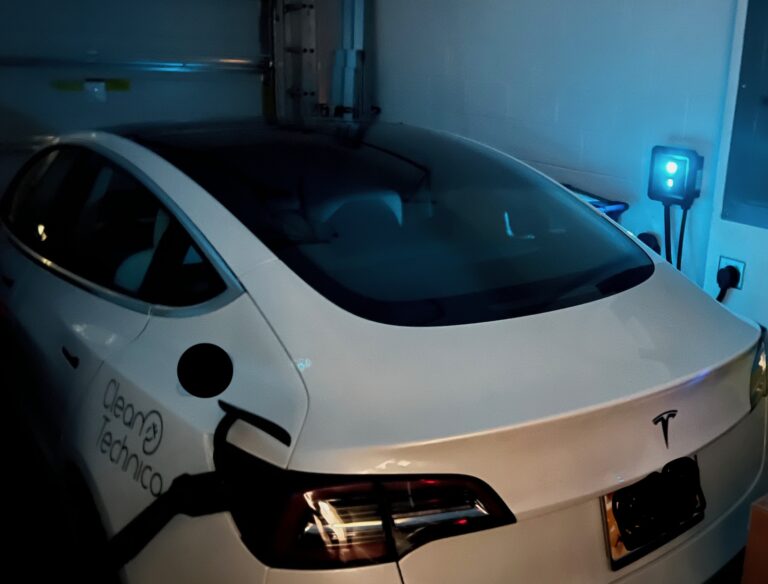University of Michigan Reveals “Aevum” Solar Racecar

If you’ve ever read about or followed solar car racing, you figure out pretty quick that it’s not like other races. The cars generally don’t go very fast, sometimes averaging only 15 MPH. The challenge is how fast the vehicles can go powered only by the sun on their backs, and with today’s solar technology, the answer is always “not very fast.”
But, there are a couple of important reasons to follow these races. First off, they’re training the future of EV designers and engineers, as we explain more in this article. They not only learn how to design, build, and use novel vehicles in the real world, but they also learn about all of the real-world challenges, like limited funding, design limitations, supply chain challenges, and more. The other reason to follow these cars is that sometimes they really do come up with something interesting and innovative that finds its way into future EVs.
Next year’s World Solar Challenge forced teams to tackle two real-world concerns for vehicles: fitting a wider variety of humans, and taking care of the environment.
In many cases, solar car teams have opted to take a page out of horse racing, and use their most petite team members for drivers to save on both weight and on space. Making the car smaller in turn means better efficiency, which means they get an edge on other teams. So, the WSC rules now force all teams to at least build their car to fit a 6’4″ dummy before the race, even if they use shorter drivers. This puts everyone on the same level playing field.
Another thing the WSC rules require this next race is the use of more environmentally friendly solar cells. While gallium-arsenide cells produce more electricity, that kind of solar cell is worse for the environment than more common silicon cells. To make the whole race better for the environment, all teams must use cleaner silicon cells. This will slow everyone down, though.
Or, will it?
The University of Michigan team is trying to see if they can work around these limitations and still get decent times. Their 2022 “Aevum” solar vehicle seems to be designed to do its best to accommodate the challenges the World Solar Challenge placed on the team. “After our analysis, we felt that this style of vehicle was most competitive despite that slight increase in vehicle size, and our engineers worked hard to minimize the increase in drag,” project manager of the Solar Car Team Joseph Harrington said in a statement shared by All About Ann Arbor.
Designing the car proved to be very difficult, especially with the COVID emergency. It’s the first solar car University of Michigan students have ever designed remotely, working from home and not having any face-to-face interaction. This caused delays, but the design did come together.
On the team’s website, they say that it’s “the smartest solar car ever constructed by the team.” It uses a suite of sensors to optimize the driving of the car and get the most distance possible out of the available power. “Whether it is battery performance, energy consumption, or array efficiency, Aevum, in its entirety, is readily accessible at the telemetrist’s fingertips.” the team’s website says.
You can learn a lot more about the team and their car here.
Featured image by Liana Lau, Solar Car Team, University of Michigan.
Check out our brand new E-Bike Guide. If you’re curious about electric bikes, this is the best place to start your e-mobility journey!
Appreciate CleanTechnica’s originality and cleantech news coverage? Consider becoming a CleanTechnica Member, Supporter, Technician, or Ambassador — or a patron on Patreon.
Advertisement
 This post has been syndicated from a third-party source. View the original article here.
This post has been syndicated from a third-party source. View the original article here.





